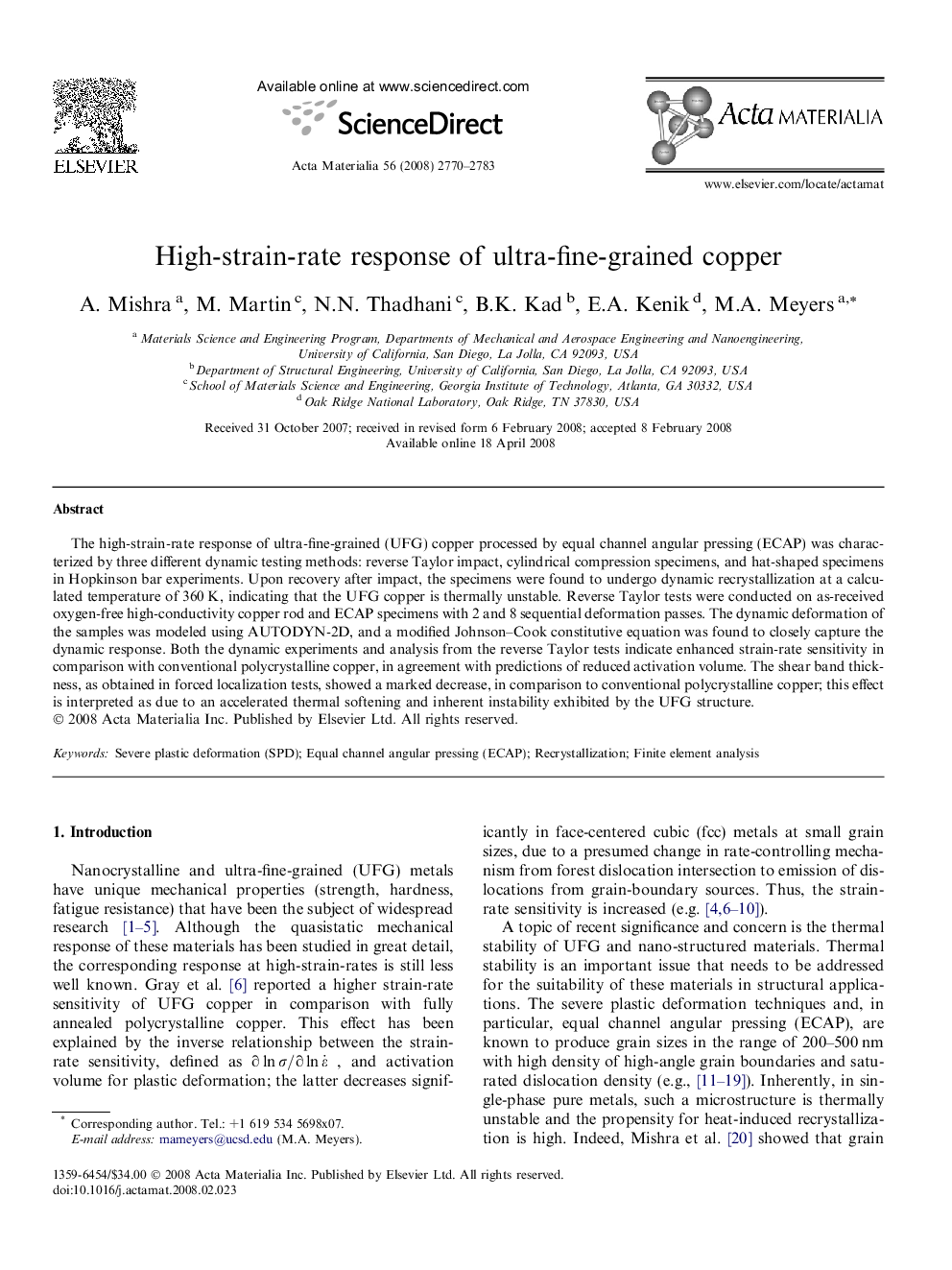| Article ID | Journal | Published Year | Pages | File Type |
|---|---|---|---|---|
| 1450170 | Acta Materialia | 2008 | 14 Pages |
The high-strain-rate response of ultra-fine-grained (UFG) copper processed by equal channel angular pressing (ECAP) was characterized by three different dynamic testing methods: reverse Taylor impact, cylindrical compression specimens, and hat-shaped specimens in Hopkinson bar experiments. Upon recovery after impact, the specimens were found to undergo dynamic recrystallization at a calculated temperature of 360 K, indicating that the UFG copper is thermally unstable. Reverse Taylor tests were conducted on as-received oxygen-free high-conductivity copper rod and ECAP specimens with 2 and 8 sequential deformation passes. The dynamic deformation of the samples was modeled using AUTODYN-2D, and a modified Johnson–Cook constitutive equation was found to closely capture the dynamic response. Both the dynamic experiments and analysis from the reverse Taylor tests indicate enhanced strain-rate sensitivity in comparison with conventional polycrystalline copper, in agreement with predictions of reduced activation volume. The shear band thickness, as obtained in forced localization tests, showed a marked decrease, in comparison to conventional polycrystalline copper; this effect is interpreted as due to an accelerated thermal softening and inherent instability exhibited by the UFG structure.
